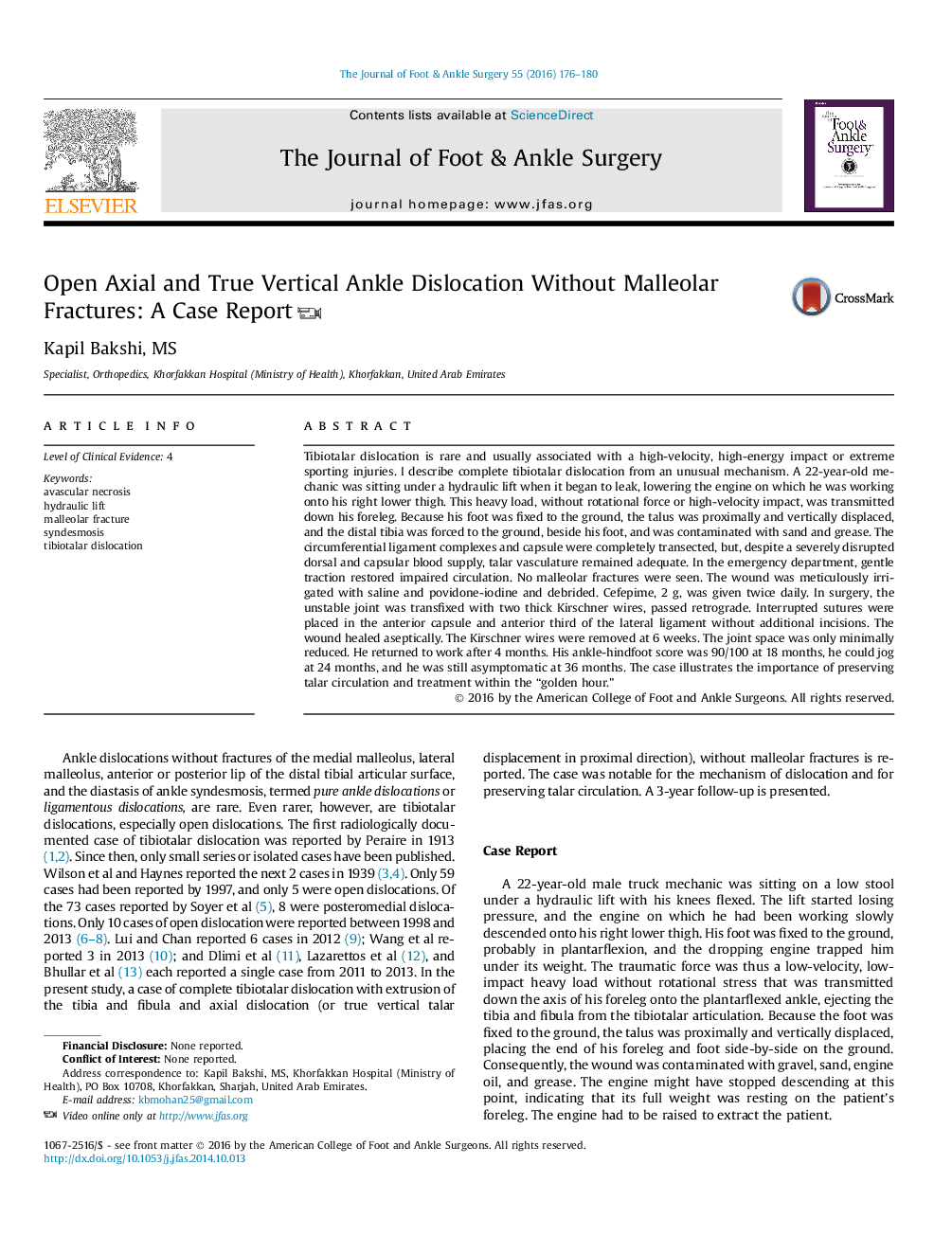| Article ID | Journal | Published Year | Pages | File Type |
|---|---|---|---|---|
| 2719326 | The Journal of Foot and Ankle Surgery | 2016 | 5 Pages |
Tibiotalar dislocation is rare and usually associated with a high-velocity, high-energy impact or extreme sporting injuries. I describe complete tibiotalar dislocation from an unusual mechanism. A 22-year-old mechanic was sitting under a hydraulic lift when it began to leak, lowering the engine on which he was working onto his right lower thigh. This heavy load, without rotational force or high-velocity impact, was transmitted down his foreleg. Because his foot was fixed to the ground, the talus was proximally and vertically displaced, and the distal tibia was forced to the ground, beside his foot, and was contaminated with sand and grease. The circumferential ligament complexes and capsule were completely transected, but, despite a severely disrupted dorsal and capsular blood supply, talar vasculature remained adequate. In the emergency department, gentle traction restored impaired circulation. No malleolar fractures were seen. The wound was meticulously irrigated with saline and povidone-iodine and debrided. Cefepime, 2 g, was given twice daily. In surgery, the unstable joint was transfixed with two thick Kirschner wires, passed retrograde. Interrupted sutures were placed in the anterior capsule and anterior third of the lateral ligament without additional incisions. The wound healed aseptically. The Kirschner wires were removed at 6 weeks. The joint space was only minimally reduced. He returned to work after 4 months. His ankle-hindfoot score was 90/100 at 18 months, he could jog at 24 months, and he was still asymptomatic at 36 months. The case illustrates the importance of preserving talar circulation and treatment within the “golden hour.”
